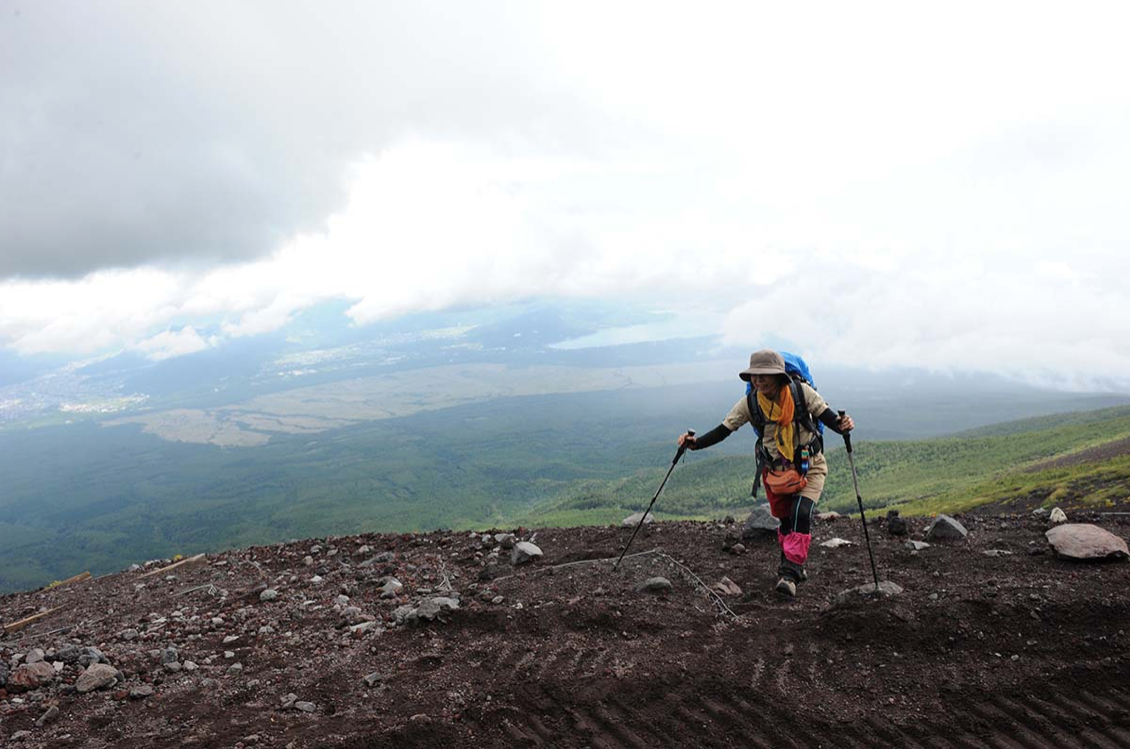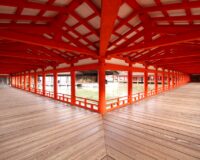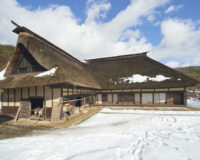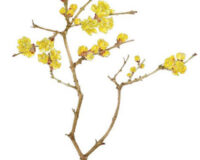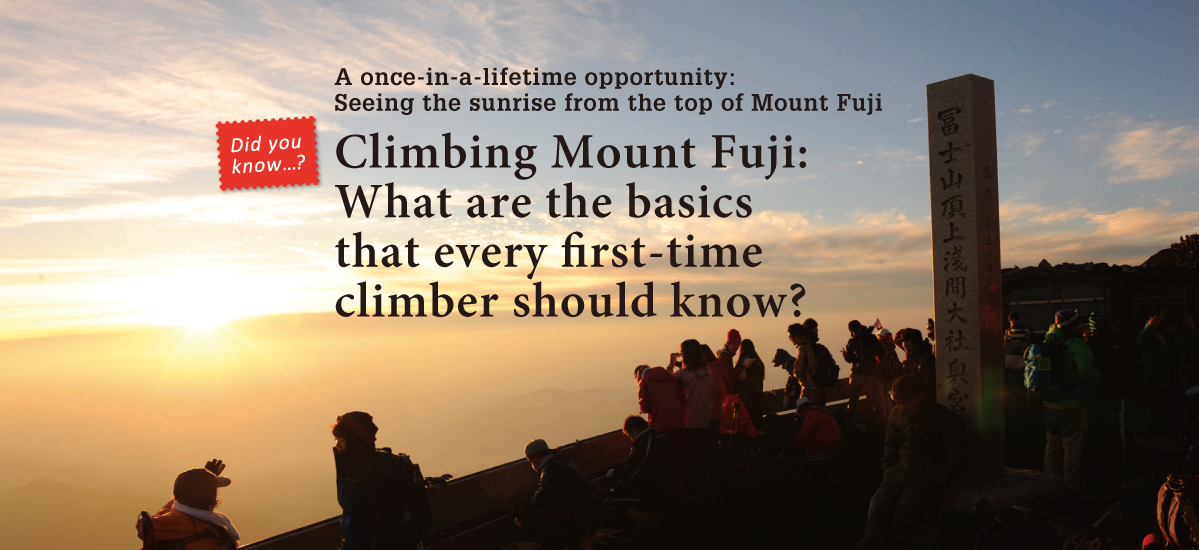
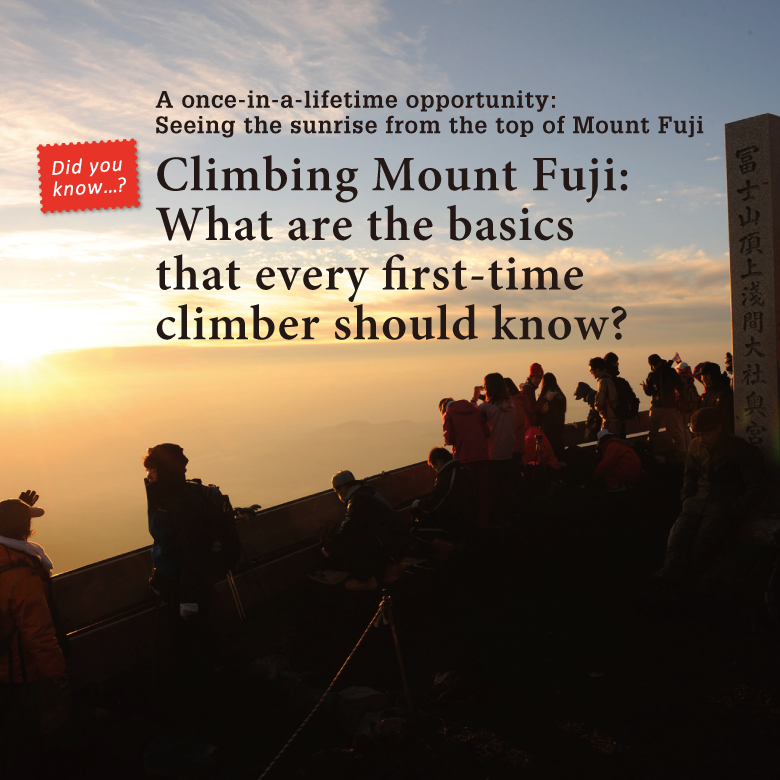
Deciding to climb Mount Fuji is all well and good, but how do you go about preparing for the climb? And how do you find out when’s the best time to climb? Or which is the best route to take?
Text : 栗山ちほ Chiho Kuriyama / Photos : 金子雄爾 Yuji Kaneko / English Version : Judy Evans
Keyword : Mountain Climbing / Mount Fuji / Yoshida Trail / Mountain Hut / Goraikō
Where should you start your climb?
There are four official trails leading to the summit of Mount Fuji: the Fuji Yoshida Trail which starts in Yamanashi Prefecture, and the Subashiri, Gotemba and Fujinomiya Trails, which all start in Shizuoka Prefecture. Each of these trails has ten stations, with the beginning of the trail near the base of the mountain being the first station, and the summit being the tenth. However, public roads provide access for cars and buses as far as the 5th Station on each of the trails. The only way to get to the summit from the 5th Station is on foot and this is where climbing usually begins. While die-hard experienced climbers might take other routes to the summit such as starting at the base or using ancient trails, only the four official trails are well-maintained. It is along these trails that all of the mountain huts are located.
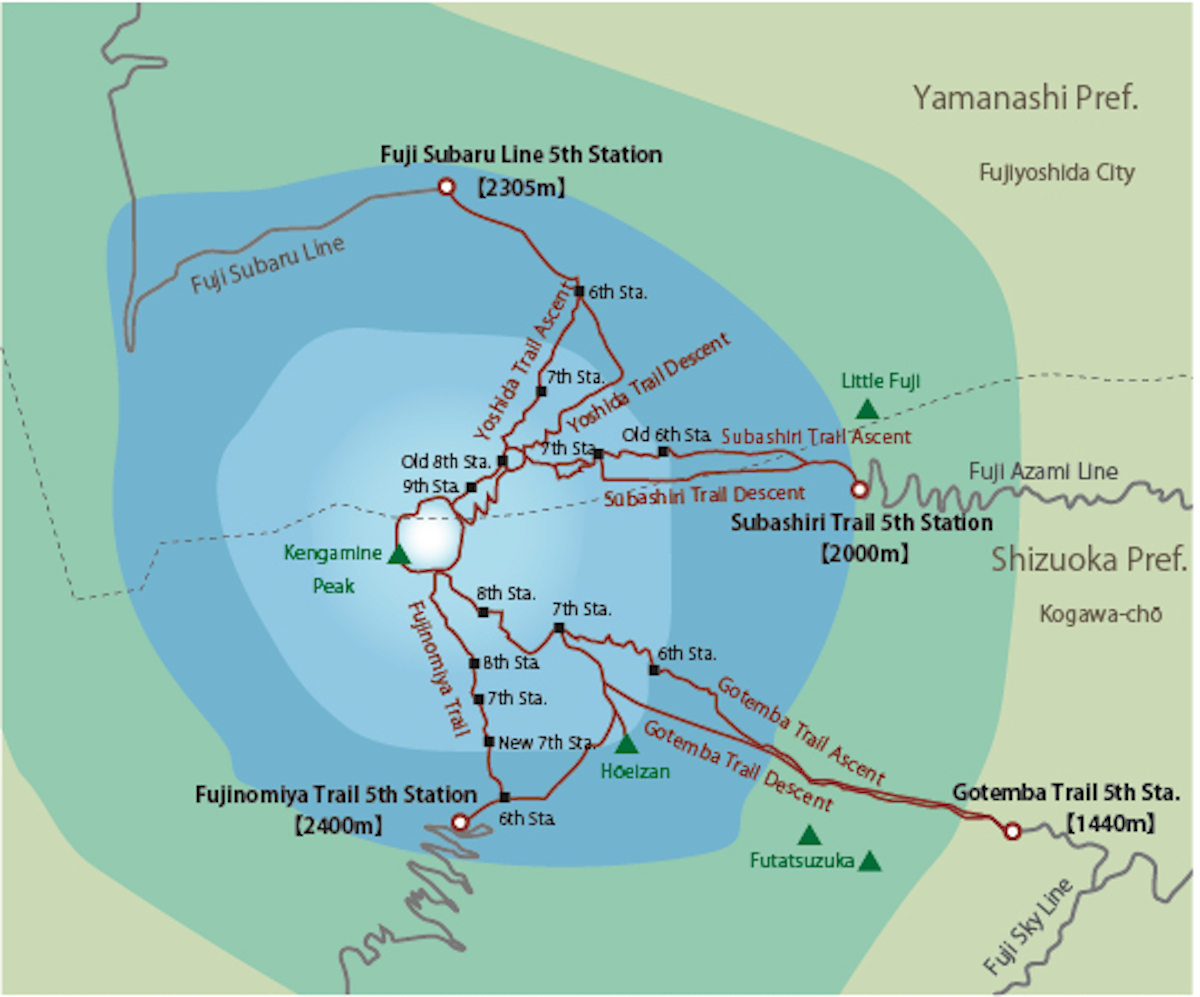
Yoshida Trail (Yamanashi Prefecture)
[Ascent: 5-7 hours. Descent: 3-5 hours. 5th Station elevation 2,300 m.]
The Yoshida Trail, on the Fuji Subaru Line, is also sometimes known as the ‘Kawaguchi-ko Trail’. This has been the most popular route ever since the days of the Fuji-kō, a Shintō sect dedicated to the worship of Mount Fuji in the Edo Period (1603-1868). This well-maintained trail is relatively easy to climb, and has the most huts of all the four routes.
Buses taking climbers directly from Tokyo provide excellent access to the Yoshida 5th Station. For this reason however, the Yoshida Trail is the most crowded of the four official trails. Nevertheless, this is the recommended route for beginners.
Subashiri Trail (Shizuoka Prefecture)
[Ascent: 6-8 hours. Descent: 3-5 hours. 5th Station elevation 2,000 m.]
Climbing starts from an elevation of 2,000 metres. This is the most varied of the routes, with the trail passing through a forest belt that extends to the 6th Station, and alpine plants along the way. The trail is on the eastern side of the mountain, directly facing the rising sun, or ‘goraikō’. The Subashiri Trail does have fewer climbers than the popular Yoshida and Fujinomiya Trails for most of its length, but it merges with the Yoshida Trail from the Old 8th Station and gets very crowded from this point up to the summit.
Gotemba Trail (Shizuoka Prefecture)
[Ascent 7-10 hours. Descent 3-6 hours. 5th Station elevation 1,440 m.]
Climbing on the Gotemba Trail begins from an altitude of only 1,440 metres, the lowest of the four official routes. Due to the big change in altitude and the extra distance, most climbers stay overnight in one of the mountain huts along the route. There are fewer huts along this trail, so it is advisable to bring sufficient food and water along with you. The Gotemba Trail is also the least crowded of the four routes. The descent features the ‘ōsunabashiri’ or ‘great sand run’, where you can make a rapid descent through loose scoria gravel, covering as much as three metres with a single stride.
Fujinomiya Trail (Shizuoka Prefecture)
[Ascent: 4-7 hours. Descent: 2-4 hours. 5th Station elevation 2,400 m.]
This is the shortest route to the summit. The trail reaches the summit near Oku-no-miya Shrine (an outpost of the Fujisan Hongū Sengen Taisha which is located at the base of the mountain), close to Kengamine Peak, the highest point of the mountain. The Fujinomiya Trail is the only one of the four official routes where the ascent and descent routes follow the same trail. This means that during busy times the trail can become congested in places and climbers have to wait in line to get past each other. Although this is the shortest route, it is also the straightest and offers a fairly steep climb to the summit.
*Private vehicle restrictions during the official climbing season.
Access to all the climbing routes (except the Gotemba Trail) is closed to private vehicles during the official climbing season. Cars can be parked in designated car parks in the area, which have shuttle buses running to the 5th Stations. All trails have buses linking to the nearest train stations as well, so during the official climbing season, getting to the nearest station by train and transferring to a bus would be a good option. Additionally, buses from the Tokyo metropolitan area link directly to the Yoshida Trail 5th Station.
When’s the best time to climb Mount Fuji?
The official climbing season begins in early July and runs until late August/early September. The exact dates can vary, depending on the weather and climate conditions. The mountain huts remain open for the duration of the official season, but are closed otherwise. The trails are somewhat less congested at the very beginning and again at the very end of the official season, but this is also a time when the weather is less settled. The recommended time to climb is from the end of the rainy season (usually mid-July) through the first week or so of August, when the skies are generally clear. The downside of climbing during this period is the inevitable crowds.
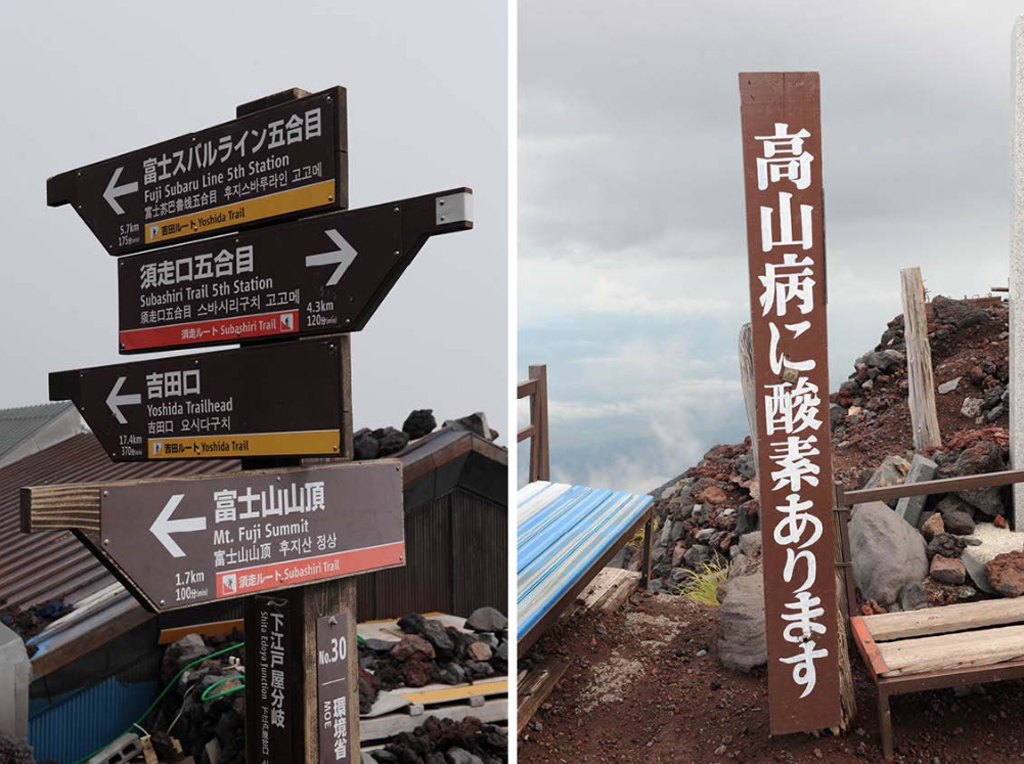
Even in summer it’s cold at the summit.
The temperature difference between the summit and the base can be more than 20 degrees Celsius, so when temperatures on the plains are over 30 degrees, it might only be around 10 degrees at the summit. It is particularly chilly at night and early in the morning. Moreover, with hardly any shade to relieve the direct sunlight, it can be extremely hot on the mountain side. UV radiation is stronger at high altitudes, so sunburn is a concern. Selecting appropriate clothing becomes a crucial aspect of preparing to climb Mt Fuji. It is best to seek advice from experienced climbers.
Beginners should stay overnight on the mountain.
Altitude sickness is one of the biggest concerns when climbing Mt Fuji. Those new to mountain climbing, or who are climbing Mt Fuji for the first time, are advised to acclimatise to the altitude by spending some time at the 5th Station, and then by spending the night in a hut at the 7th or 8th Station before heading to the top. In order to be at the summit in time to see the sunrise (goraikō), climbers should try to get to sleep by 7 p.m., then get up and resume climbing at midnight.
*Altitude sickness – the scourge of mountain climbing
As the air pressure decreases with rising altitude, the amount of available oxygen also decreases. A sudden decrease in oxygen in the bloodstream can cause symptoms of altitude sickness such as headaches, dizziness, nausea and vomiting. These symptoms usually disappear after a few days, but serious cases can result in fluid on the brain (high altitude cerebral edema) and even death. Climbers are advised to rest if symptoms occur, and to go back down the mountain if the symptoms do not resolve themselves. The 5th Stations where climbing starts on Mt Fuji are already at a high altitude, being over 2,000 metres, so it is advisable to allow time for your body to become accustomed to the altitude here before even beginning to climb. Getting enough sleep prior to climbing is also important.
What are the mountain huts like?
Reservations are essential for all Mt Fuji’s huts. Due to the large number of climbers during the Obon and summer vacation period, the huts get booked out very quickly. Bookings for this period must be made at least two months in advance. Private rooms in the huts are rare. Generally, everyone, regardless of gender, sleeps side by side (bring ear plugs!) on futons. Climbers should aim to arrive at the huts before sunset, by 4pm at the latest.
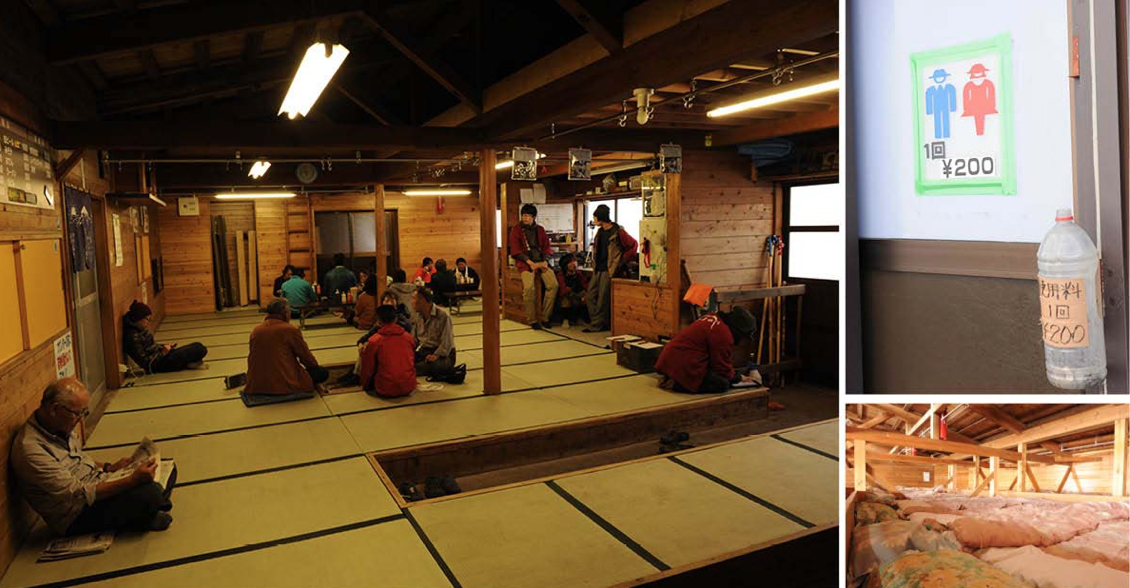
There are no showers or baths in the mountain huts.
Water is scarce on the mountain so there are no baths or showers in the huts and very few water taps. Climbers bring wet wipes to wash their faces and use their own drinking water for cleaning their teeth. Every single climber is required to take all their own rubbish back down the mountain with them.
It’s surprisingly easy to buy food and drinks on the mountain.
Although water is a scarce commodity, drinks can be purchased from the huts and there are also vending machines on the mountain. A 500 ml bottle of water costs around 500 yen. For those wishing to travel lightly, it is possible to take a small amount of food and drink, and to stock up at the mountain huts along the way.
The toilets are not free of charge, but there are plenty of them.
The toilets are not free of charge, but there are plenty of them.
The availability of toilets can be a concern for women in particular, who might tend to try drinking less in order to avoid needing to use the loo. However, frequent replenishment of fluid is essential to help prevent altitude sickness. In fact, aside from the Gotemba Trail, there are plenty of mountain huts along the way, and toilets are available at least every couple of hours of walking. You do have to pay to use the toilets though, with fees ranging from 100 to 300 yen. There is usually toilet paper in the loos, but it would be wise to bring a small pack of tissues with you.
Despite the fact that it is possible to drive halfway up the mountain and the facilities such as climbing trails and mountain huts are well maintained, one should not make light of the fact that Mt Fuji is Japan’s highest mountain. Climbers are advised to plan accordingly.
Still, climbing such a high mountain under your own steam really is quite an amazing accomplishment!
In our next segment we’ll report on our own climb up Mt Fuji – a UNESCO World Heritage Site.
